Explore the essential fish varieties that define the exquisite art of classic sushi. Each fish brings a unique flavor, texture, and tradition to the sushi experience, making it a timeless culinary adventure.
Tuna (Maguro)
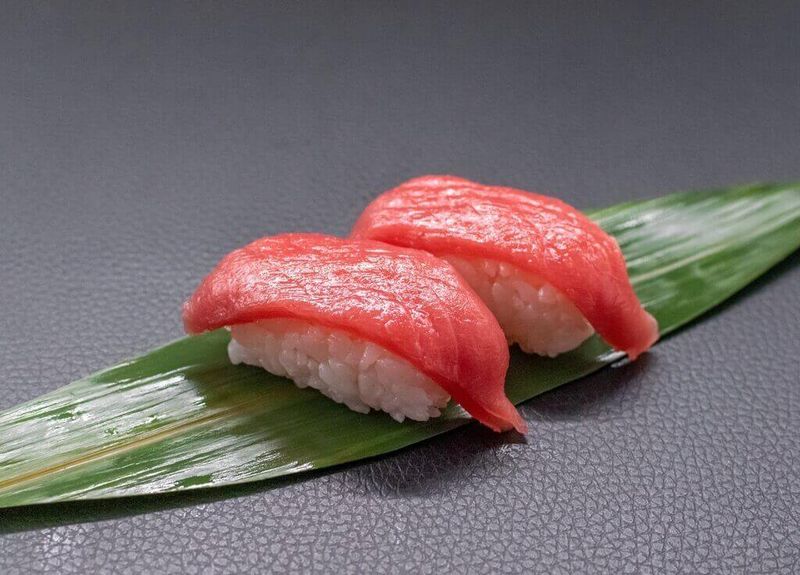
Tuna, or maguro, is a cornerstone of sushi cuisine. With its rich, buttery texture, it captivates the palate, offering a sublime balance of umami and sweetness. The vibrant red hue of tuna is a visual feast, making it a favorite in sashimi and nigiri alike. Historically, tuna was less popular due to its dark color, but its rise in sushi culture showcases its unparalleled flavor.
Did you know that different parts of the tuna offer varying tastes and textures? The prized fatty belly, or toro, is particularly sought after for its melt-in-the-mouth sensation.
Salmon (Sake)
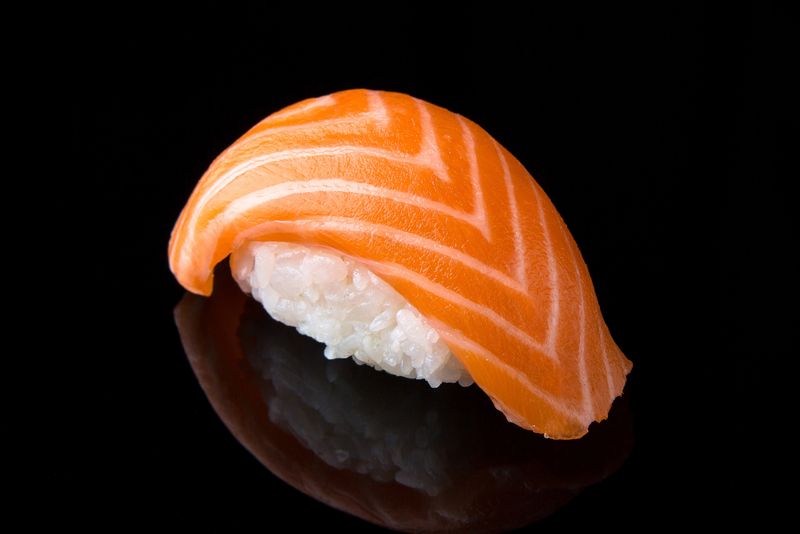
Salmon, known as sake in Japan, is cherished for its tender, buttery flesh and vivid color. Its origins in sushi are modern, as salmon only became popular in Japan in the late 20th century.
This fish’s smooth texture and rich taste make it a staple for sushi lovers worldwide. Whether served as nigiri or sashimi, salmon’s appeal lies in its consistency and delightful flavor.
Fun fact: Despite being a staple now, salmon was traditionally not consumed raw due to concerns over parasites—a testament to modern food safety advancements.
Yellowtail (Hamachi)

Yellowtail, or hamachi, is famed for its smooth, silky texture and rich, buttery flavor. It’s a favored choice in sushi bars for its balance of fat and sweetness. Younger yellowtail, known as inada, offers a lighter taste, while mature hamachi is more robust.
The fish’s popularity is partly due to its availability year-round, ensuring sushi enthusiasts can enjoy it anytime.
A quirky tidbit: Yellowtail has been a part of Japanese cuisine since the Edo period, illustrating its timeless appeal and deep-rooted place in culinary tradition.
Eel (Unagi)
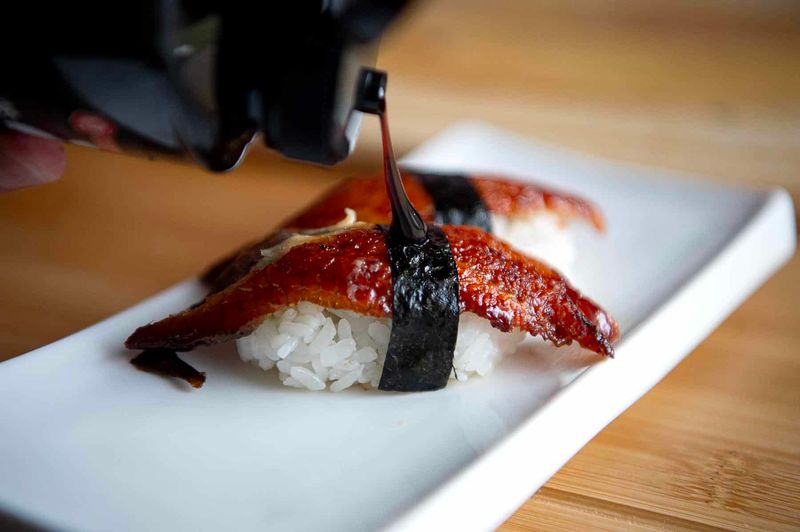
Unagi, or freshwater eel, brings a unique, smoky flavor to the sushi table. Its preparation involves grilling and a sweet soy-based sauce that enhances its natural richness.
Eel is traditionally consumed during the summer, believed to provide stamina for the hot months. The tender, flaky texture of unagi distinguishes it from other fish, offering a delightful contrast in sushi assortments.
Did you know? Unagi is so popular in Japan that there’s even a day dedicated to eating eel, known as Doyo-no-Ushi no Hi.
Mackerel (Saba)
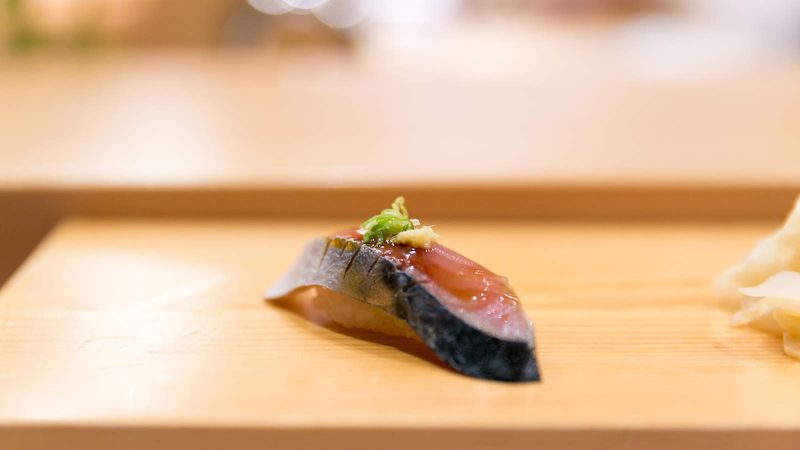
Saba, or mackerel, is celebrated for its bold, pronounced flavor and slightly oily texture. Its robust taste pairs perfectly with vinegared rice, creating a harmonious balance in sushi.
Mackerel is often marinated in salt and vinegar before being served, a technique that enhances its flavor profile and preserves its freshness.
Fun fact: In traditional sushi, mackerel is used to showcase the sushi master’s skill, as its intense flavor requires careful preparation to ensure balance and harmony.
Snapper (Tai)
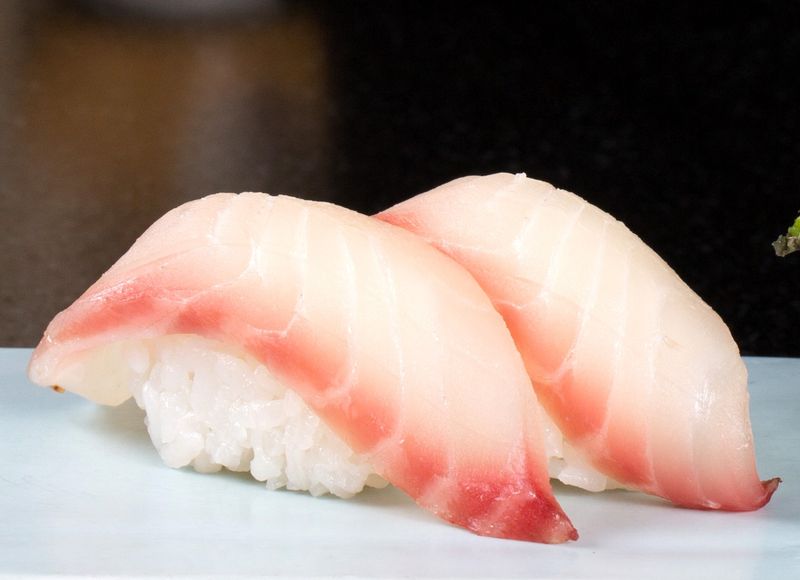
Snapper, or tai, is revered in Japan for its subtle, sweet flavor and firm texture. Often associated with celebrations, it’s considered a symbol of good fortune and prosperity.
Tai is typically served as nigiri, where its clean taste shines through, complemented by a hint of wasabi.
A little nugget of culture: Snapper is often served at festive occasions in Japan, emphasizing its status as a fish of celebration and joy.
Octopus (Tako)
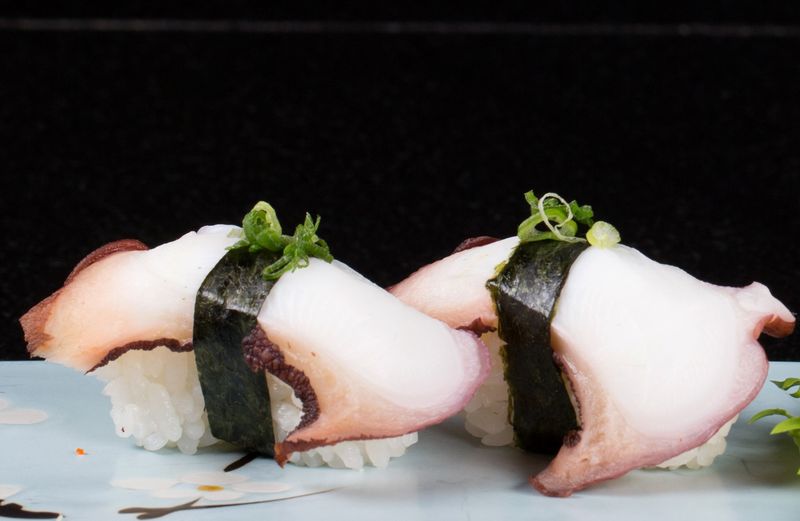
Tako, or octopus, adds a chewy, slightly sweet component to sushi. Its preparation involves tenderizing to ensure a pleasant texture, often achieved through a salt massage.
Octopus is usually sliced thin and served as nigiri, offering a delightful bite that contrasts with softer fish.
Did you know? Octopus has been a part of Japanese cuisine for centuries, admired for its versatility and unique texture, making it a staple in sushi assortments.
Shrimp (Ebi)
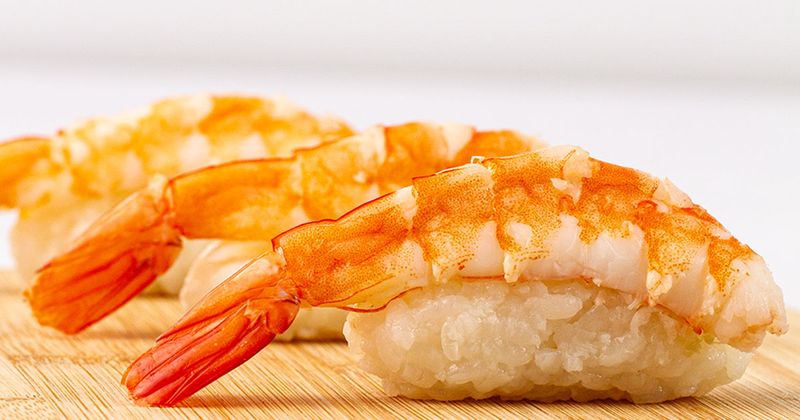
Ebi, or shrimp, is a versatile and beloved ingredient in sushi, known for its sweet, juicy flavor and firm texture. It’s often boiled and then chilled to enhance its natural sweetness.
Shrimp sushi is a favorite for its delightful taste and visually appealing presentation, making it a must-try for sushi newcomers and connoisseurs alike.
Interesting tidbit: Shrimp is considered a symbol of longevity in Japanese culture, often served at celebrations to bring good fortune and happiness.
Sea Urchin (Uni)
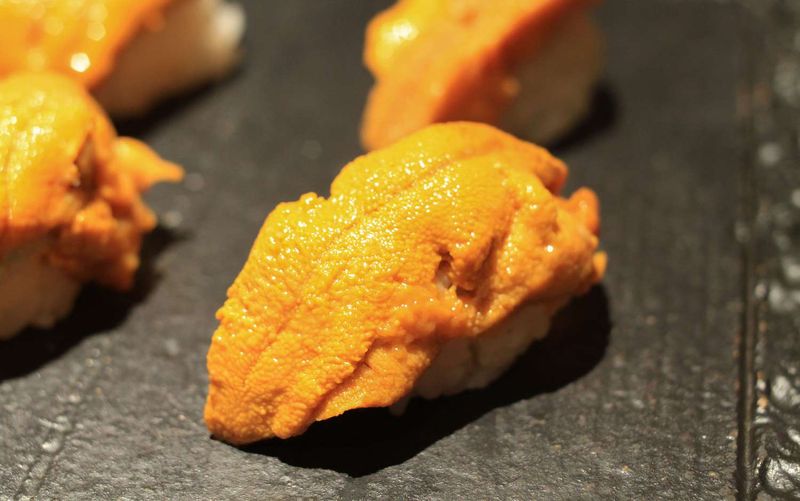
Uni, or sea urchin, is a delicacy that intrigues with its creamy texture and briny, oceanic flavor. It’s a sushi choice that offers a luxurious experience, often enjoyed by more adventurous palates.
The vibrant orange hue of uni set against the white rice creates a visually striking presentation.
A fascinating insight: Uni is often described as the foie gras of the sea, beloved for its rich, indulgent taste that captures the essence of the ocean.
Scallop (Hotate)
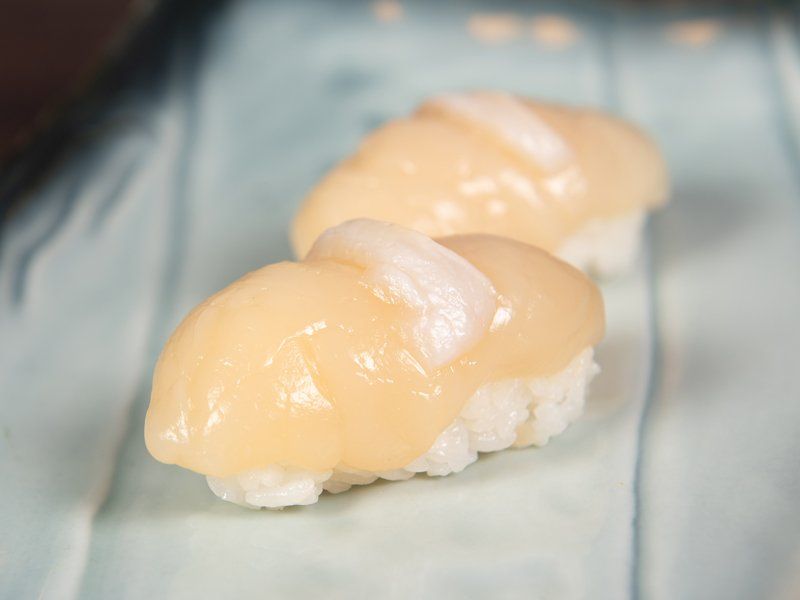
Hotate, or scallop, brings a sweet, creamy flavor to the sushi platter, celebrated for its tender, melt-in-the-mouth texture. This seafood delight is often enjoyed as nigiri, highlighting its natural sweetness and subtle umami notes.
Scallops are prized for their delicate taste, making them a luxurious choice for sushi enthusiasts seeking a refined experience.
Fun fact: Scallops are considered a symbol of good luck and protection in Japan, often featured in traditional art and folklore.
Flounder (Hirame)

Hirame, or flounder, is known for its delicate, mild flavor and silky texture. This fish is a favorite for sushi purists who appreciate subtlety and refinement.
Often served as nigiri or sashimi, hirame offers a light, clean taste that pairs beautifully with a touch of citrus.
A delightful detail: Flounder is often served in the winter, when its flavor is at its peak, reflecting the Japanese appreciation for seasonal ingredients.
Leave a comment